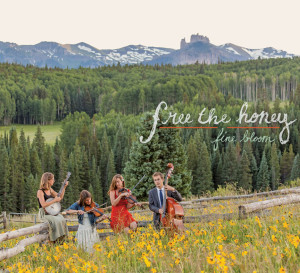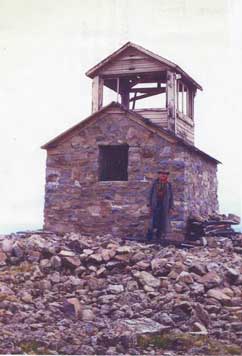by Martha Quillen
Two score and six years ago, Ed Quillen and some of his friends started musing about whether Wyoming could be taken over by hippies (in a nonviolent manner, of course).
It was a crazy idea, but the events unfolding in 1969 almost made it seem feasible. Student riots, sit-ins, and demonstrations rocked the nation. The Black Panthers, LaRaza, National Organization of Women, American Indian Movement, Students for a Democratic Society and Gay Liberation Front were on the rise. In October, reformers called for a Moratorium on the Vietnam War, and on Nov.15, that event culminated with 250,000 to 500,000 participants marching in Washington, D.C.
That year also featured Love-ins, Be-ins, and festivals across America (including in Greeley and Denver) Whether their objective was to promote sex, drugs and rock and roll or to spread the mantra Make Love Not War escapes me.
But at that point, long-haired, left-leaning youngsters seemed to be changing the world. Boulder had become a mecca for the counterculture. There were communes tucked away in the Rocky Mountains. Hippies and soldiers regularly clashed in Colorado Springs night spots. And young transients streamed into Denver, where they frolicked naked in the fountains at Civic Center Park.
Yet Wyoming was still vast, lonesome and comparatively staid.
The idea that an influx of fervent activists and hordes of students from Berkeley, Columbia, Harvard and other institutions of high learning might be able to outnumber and overwhelm Wyoming residents was simultaneously horrifying and irresistible – a bit like imagining Texas truly seceding from the union, or Michele Bachmann and her cohorts actually launching their revolution.
So one night in a 3.2 bar in Weld County, Colorado, Ed and his friends raucously argued about how a hostile takeover might be accomplished. They tried to calculate how many people it would take, how much it would cost, and how long it would take. They mused about whether it would be necessary to buy up properties beforehand and pondered over whether national troops would intervene on the side of the old guard or the new majority.
Then one of Ed’s friends noticed someone eavesdropping. They all turned to look, and the person left, which made them cackle at the hilarity of it. What if somebody overheard them and actually took their ideas seriously?
They sobered a little at that notion, but perhaps not enough. Instead, Ed (who wrote a column for the college paper then) penned a spoof for his friends, a tale about hippies plotting to take over Wyoming told from the perspective of a reporter who chanced to overhear their nefarious plans in a bar. Ed’s friends loved it and thought he should convert it into a short story and sell it. But his editor had other ideas. She wanted to print it, as is, in the college paper.
Ed was appalled. The piece was a lark with no substance whatsoever. Long-haired young people were already suspect in Wyoming, and Ed figured if the Mirror printed the piece, some poor kids might get shot.
But Rita saw it as a work of satire that illustrated how strong the movement had grown and how far reformers could take things. Ed told her no; it was his piece and she couldn’t use it. But she insisted and kept insisting, until he finally suggested they save it for the next April Fools’ edition.
Then one morning a few days later, Ed opened the paper and there was his story. He was livid at first, but within a day or two he decided he was taking himself too seriously. How many people actually read college newspapers, anyway?
However ,that piece did get quoted and distributed, and many of the reports added details about the size, emptiness and purported vulnerability of Wyoming. Gradually, that story made its way into papers, newscasts and urban legend – and got expanded upon. Years later, Ed and I were in South Dakota and a newspaper editor told us all about the Colorado hippie plot to take over Wyoming, the Dakotas and Montana.
Eventually Ed came to regard that episode fondly, it being his first real success in getting his work noticed. But he always diligently called it “The Great Wyoming Hippie Hoax” and told anyone who’d listen that he had written it and that it was a lampoon, not news.
[InContentAdTwo]
A while back, I started thinking about that fiasco because a lot of my friends and acquaintances – especially those who have lived here for more than fifty years – feel as if they’re the victims of a hostile takeover, and I can’t say I blame them.
During the last few years, a lot of Salidans have made it clear they’re not fond of Salida natives. At first I didn’t assume anyone meant me when they referred to backward old-timers, cave bears and “those people.” But I found out otherwise when I tried to defend local natives one day and heard, “You natives think you own the place, but you’re all a bunch of whiners scared of anything new.”
I was angry to be sure, but until then, it had not occurred to me that I was a native of any place. It’s kind of nice to be regarded as a native, but it isn’t nice to feel that you’re despised, stereotyped and dismissed because of it.
Salida has an election coming up soon, and all of the candidates I’ve met have been pleasant, personable and far better informed than usual. Yet I’m ambivalent about all of them because they fit too neatly into the old Moving Forward and Take Back Salida camps, which were extraordinarily divisive. Those groups were initiated to promote opposing spending and development policies, but they quickly turned into feuding rivals with questionable ideological premises.
Now their campaigns are past, but the extremist positions persist. One side insists all city proposals should be greeted positively, and the other regards everything skeptically. One side repeatedly insists that more is better – more spending, trails, development, pools, amenities and festivals. And the other advocates a no-frills, bare-bones budget.
But “let your city decide” versus “make your city explain every dollar,” and “always buy more” versus “we have to spend less,” aren’t really policies. They’re reactionary positions formulated by disillusioned citizens.
The thing I loved about the 1960s was the loopy, exuberant idealism of the era. Young people thought they could vanquish war, poverty, inequality and bigotry, and live together happily with love and understanding. But as it turns out, we can’t even integrate a little town in the Rockies.
But if you’re thinking that’s Monika Griesenbeck’s fault, or Tom Yerkey’s, or Rod Farney’s? Think again, because this is a national, state and local problem that is encouraged by the way citizens promote issues.
Presumably city councils should evaluate every proposal separately with the intent of serving all of the constituencies as well as possible – because once you’re in office you supposedly serve all of the people.
But now, citizens prefer candidates who will impose their narrow, self-serving goals on everyone, which is scary whether those goals are advanced by conservative Christians, oil industry execs, Wall Street tycoons or fun-loving retirees.
One would think that wise councils would negotiate centrist compromises that would ensure better circumstances for all. But nobody ever visits the middle ground these days.
That, however, is where I sit, and I’ve got to tell you, it has become a very lonely place – lonelier by far than Wyoming.
Hmmmm, Wyoming? Maybe that’s where those who can no longer afford Salida should move. But when you get there and decide to change everything? Don’t tell them I sent you.
Martha Quillen lives in Salida, where she misses Ed, who didn’t always see the bright side, but always noticed the funny one.



